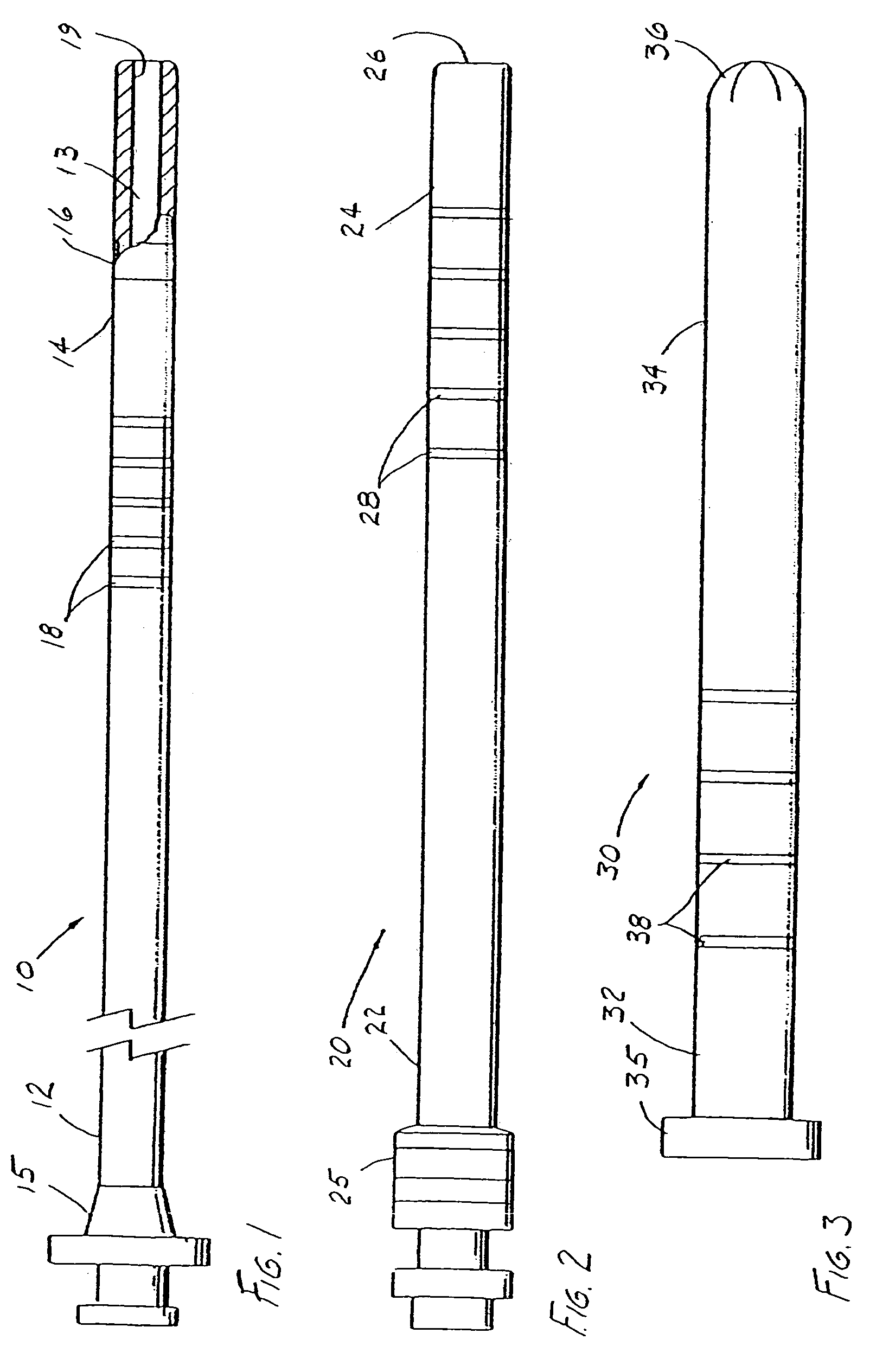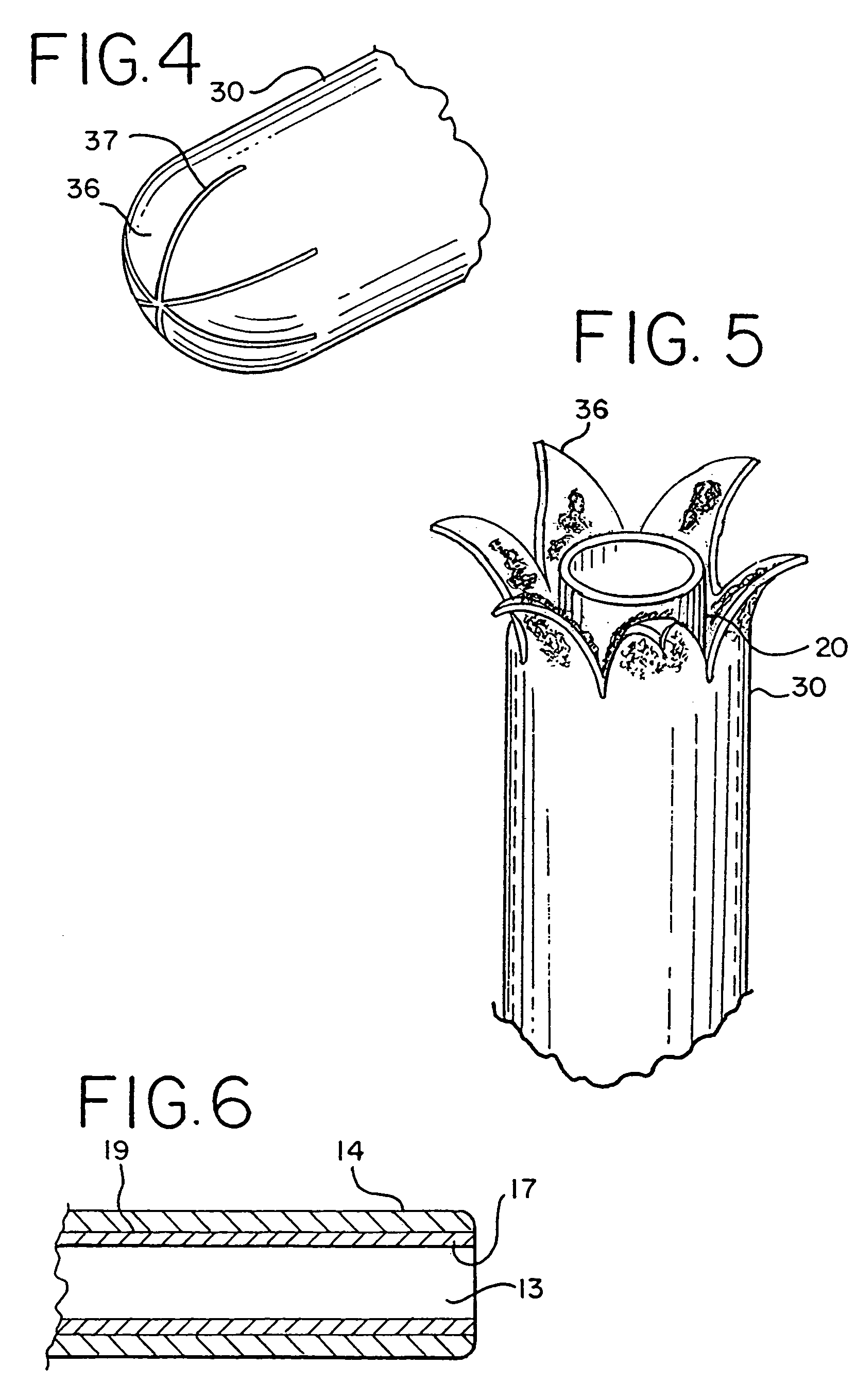Catheter with snap on feature
a technology of a catheter and a feature, which is applied in the field of catheters with snap on features, can solve the problems of releasing prostaglandins, affecting the implantation success rate,
- Summary
- Abstract
- Description
- Claims
- Application Information
AI Technical Summary
Benefits of technology
Problems solved by technology
Method used
Image
Examples
Embodiment Construction
[0029]FIGS. 1-3 depict a cellular material transfer catheter system that comprises three catheters, an inner transfer catheter 10, a guide catheter 20, and an outer protective sheath 30. The transfer catheter 10 extends somewhat longer than the guide catheter 20, and the protective outer sheath 30. The inner catheter, transfer catheter 10, includes a passageway 13 of sufficient diameter to hold and deliver cellular material, such as early embryos, gametes (oocyte or sperm), blastocysts, or zygotes that are to be transferred from in vitro culture for in vivo implantation and / or fertilization.
[0030]The cellular material or embryo transfer catheter 10 includes a proximal portion 12 and a distal portion 14. The proximal portion may include a hub 15 for interfacing with a syringe for implanting cellular material. The catheter may also include an echogenic tip 16, preferably made of stainless steel, for detecting the distal end via ultrasound. The catheter may also have markings 18 at the...
PUM
 Login to View More
Login to View More Abstract
Description
Claims
Application Information
 Login to View More
Login to View More - R&D
- Intellectual Property
- Life Sciences
- Materials
- Tech Scout
- Unparalleled Data Quality
- Higher Quality Content
- 60% Fewer Hallucinations
Browse by: Latest US Patents, China's latest patents, Technical Efficacy Thesaurus, Application Domain, Technology Topic, Popular Technical Reports.
© 2025 PatSnap. All rights reserved.Legal|Privacy policy|Modern Slavery Act Transparency Statement|Sitemap|About US| Contact US: help@patsnap.com



